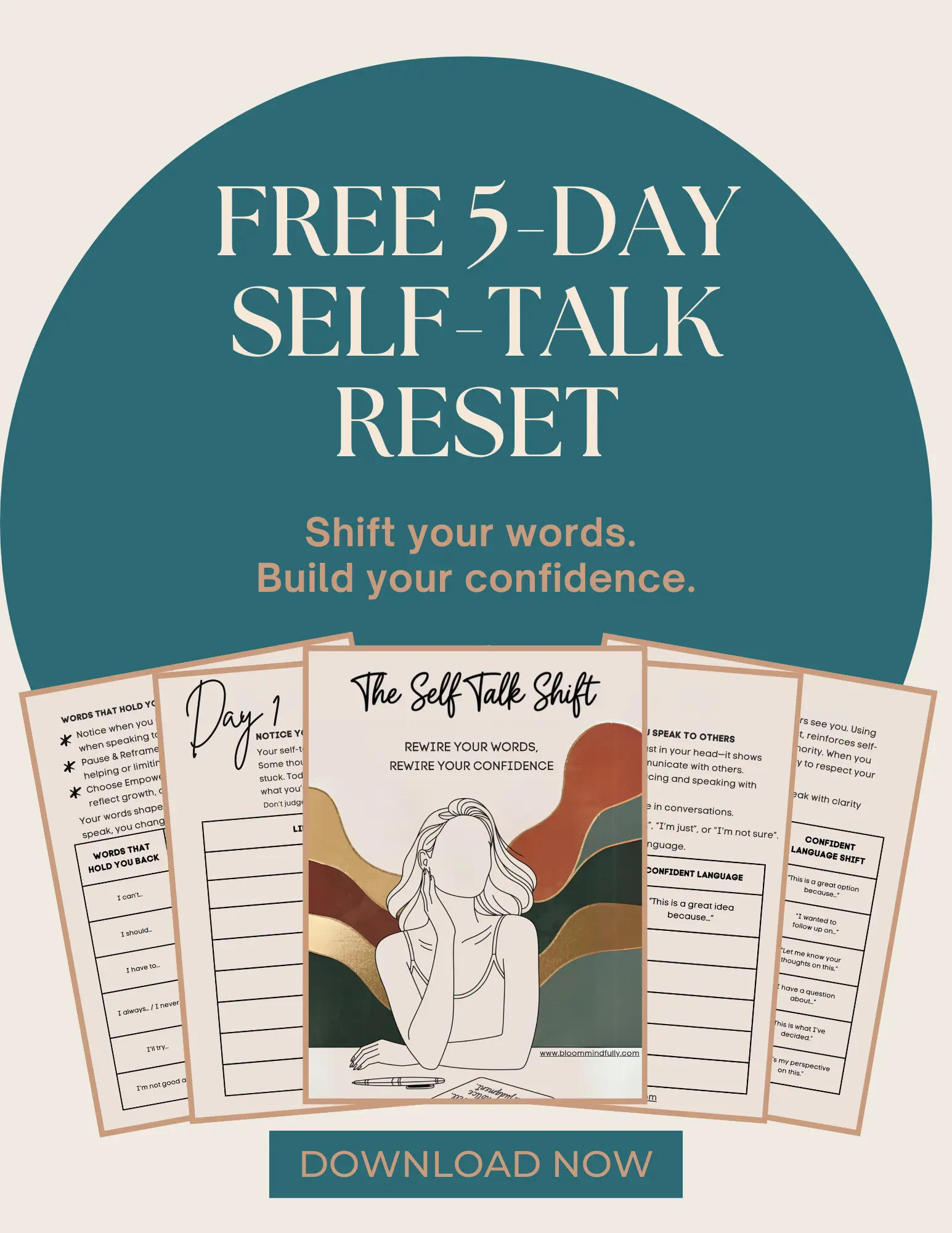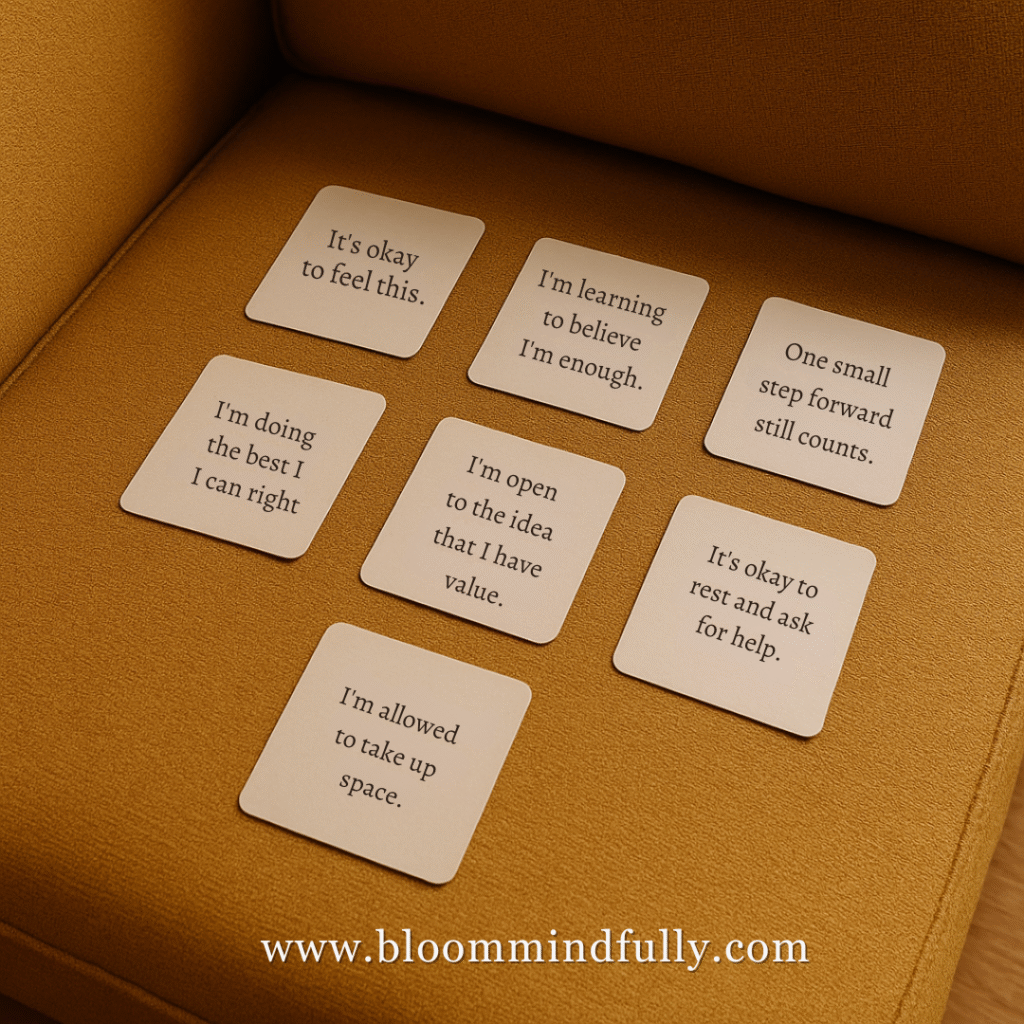What Is Self-Talk? Why It Shapes Your Confidence, Clarity And Inner Calm
Self-talk is your internal narrator—sometimes harsh, sometimes helpful—but always shaping your confidence, clarity, and calm.
Your inner voice isn’t background noise, it’s a GPS.
Before you can shift your mindset, you have to understand what is self-talk, how it shows up in everyday decisions, and why negative self-talk keeps you stuck. This post breaks down the 4 types of self-talk, the difference between self-talk vs intuition, and how to shift your inner voice with clarity, not shame.
Want to go deeper with your self-talk and finally quiet that anxious spiral? This post is part of the Foundations Series inside Master Your Inner Dialogue, where you’ll learn how to rewire your inner voice and build calm from the inside out.

What Is Self-Talk (Really)? Understanding the Voice in Your Head
Self-talk is the internal dialogue running through your mind all day long. It’s how you explain things to yourself, what happened, what it means, and what it says about you.
Sometimes it sounds like encouragement. Other times, it’s doubt, pressure, or shame. But no matter the tone, it’s shaping how you feel, what you believe, and how you show up.
Psychology Today defines self-talk as “the internal dialogue we have with ourselves throughout the day.” And according to NDSU researchers, it affects everything from stress levels to confidence and decision-making.
So if you’ve ever wondered what is self-talk, really?, it’s the inner stories you’re constantly telling yourself. And it’s more powerful than most people realize.

Ready to shift your inner dialogue and lead with confidence?
The Self-Talk Shift 5 Day Guide helps you break free from limiting thoughts and build self-trust and clarity. Rewire your mindset with simple daily prompts designed for overwhelmed entrepreneur moms.
The 4 Types of Self-Talk (That Keep You in Survival Mode)
Most people cycle through four common types of self-talk:
1. Critical – “You messed this up again.”
2. Directive – “Just get through it. Don’t stop now.”
3. Rehearsing – “What if she thinks I sound ridiculous?
4. Reflective – “I should’ve done better. Why did I freeze?”
When you’re constantly in overdrive, these become your default. You end up reacting to life instead of responding from a grounded place.
Want to explore each of these deeper? The 4 Types of Self-Talk Keeping You in Survival Mode

Self-Talk vs. Intuition (and Thinking)
This is one of the biggest “ohhh” moments for so many of us.
Self-talk isn’t the same as intuition. Or thinking. Or even your core beliefs.
Self-talk is the narrator, not always the truth-teller.
When you can tell the difference between self-talk, intuition, and thinking, it becomes easier to make aligned decisions—not just react from fear or old scripts.
Want to go deeper? Self-Talk vs. Intuition: How to Tell the Difference

How Your Words Shape Reality
This isn’t woo, it’s wiring.
Your brain is always listening. Not just to what you say out loud, but to every quiet, automatic phrase you say in your head.
Each time you think, “I can’t handle this,” your nervous system treats it as truth. Your heart rate spikes. Your body tightens. You shift into survival mode.
But when you shift your self-talk, saying, “This feels hard, but I’m finding my way”, your body responds with calm. Your system stays more regulated. You stay more present.
Your words wire your nervous system.
And over time, they shape your reality.
Want to go deeper? Read: Why Your Words Shape Your Reality: The Science of Self-Talk

What Negative Self-Talk Does to Your Body & Brain
Let’s keep it real, chronic negative self-talk doesn’t just make you feel bad emotionally.
It physically stresses your system out.
That’s why even on the slow days, you feel exhausted, your body’s been bracing all day.
Example:
→ If your self-talk says, “I can’t drop the ball or I’ll fall apart,”
→ Your body acts like it’s under threat.
You can shift this and your body will start to feel the difference.
Want the science behind it? Read: How Negative Self-Talk Impacts Your Brain, Body & Belief System
Awareness Is the First Shift
You don’t need to fix everything overnight. You don’t even need to replace every negative thought with a positive one.
Start here:
When you notice your self-talk, you reclaim your power.
Need help tracking those thoughts with clarity? Try this: Journaling for Self-Talk

Looking for real conversations and support as a mom entrepreneur?
Inside the Mindful Living for Entrepreneur Moms Facebook Group, you’ll find practical tools, gentle growth, and a community that gets it, no hustle culture, no judgment. Just real support as you build a business that fits your life.
Want to Go Deeper with Your Self-Talk?
The next time you catch your inner voice spiraling, pause and ask yourself: what is self-talk showing me right now? When you notice the pattern, you begin to rewrite it—one phrase, one moment, one choice at a time.
Start with the Self-Talk Shift 5-Day Guide if you haven’t already. It’s a gentle, powerful way to calm mental spirals and guide your inner voice back to center, from the inside out.
Ready to keep going? In Master Your Inner Dialogue, we dive into how to rewire your anxious brain, reset your nervous system, and transform negative self-talk into clarity and calm.
Your voice matters, especially the one inside.







